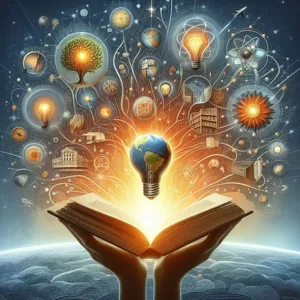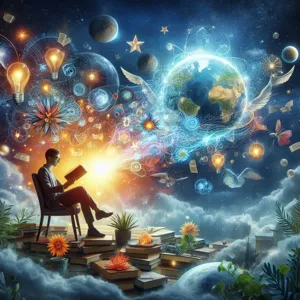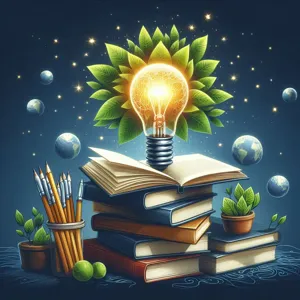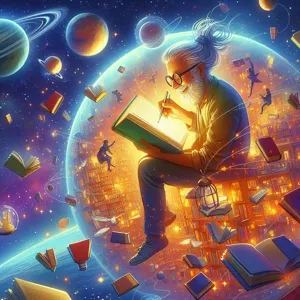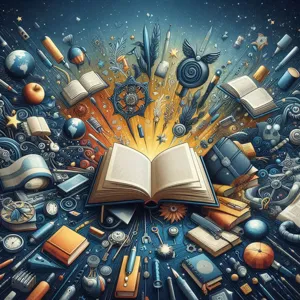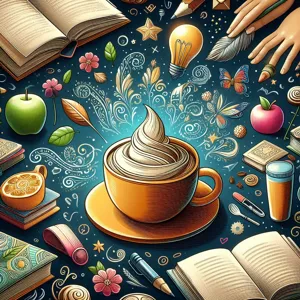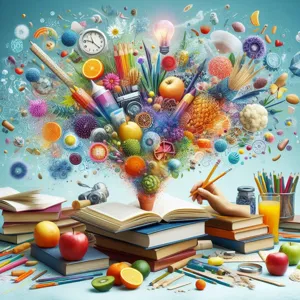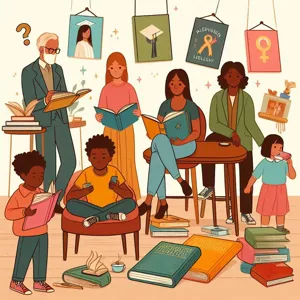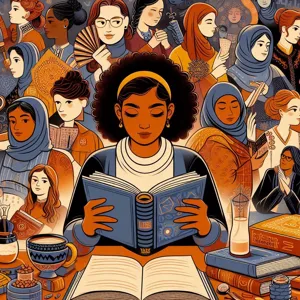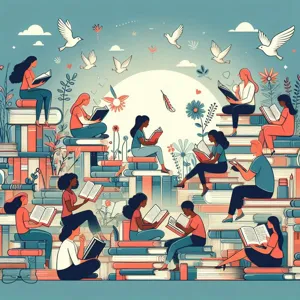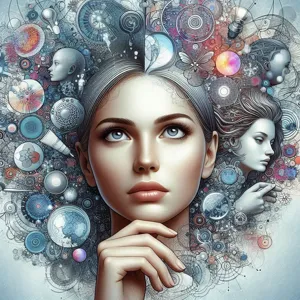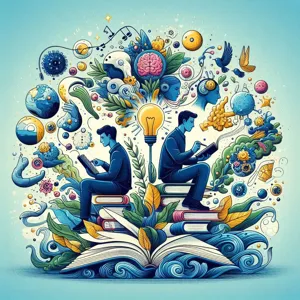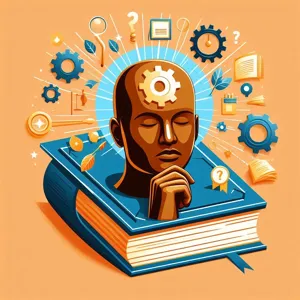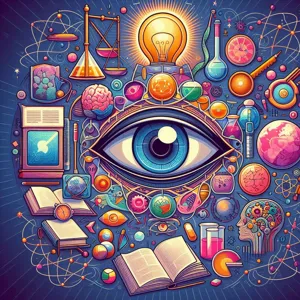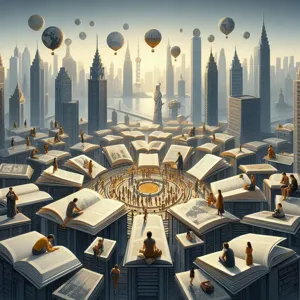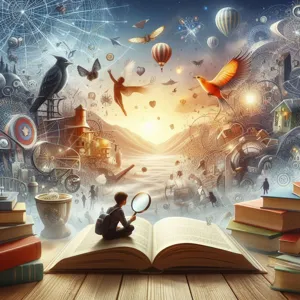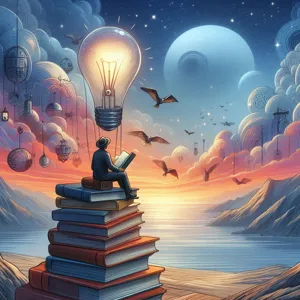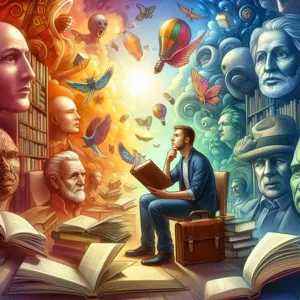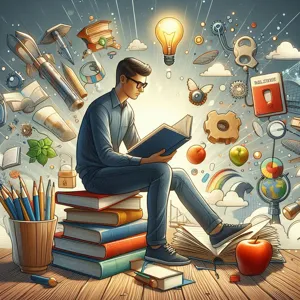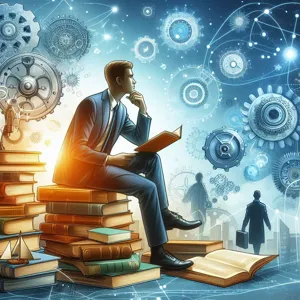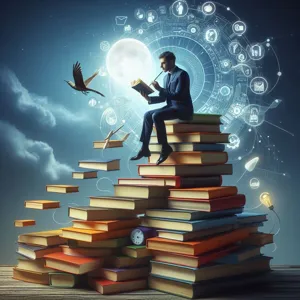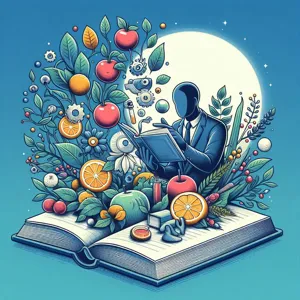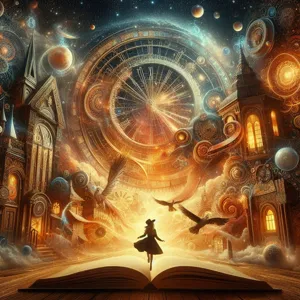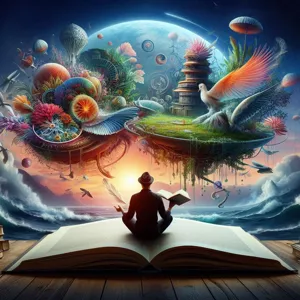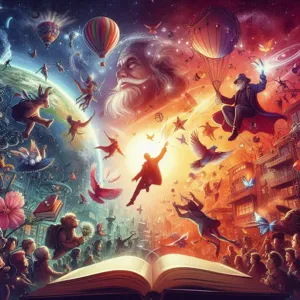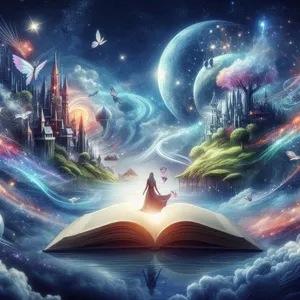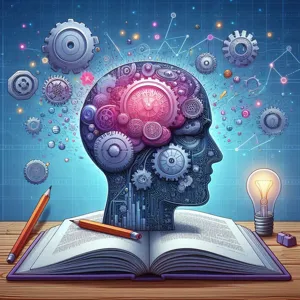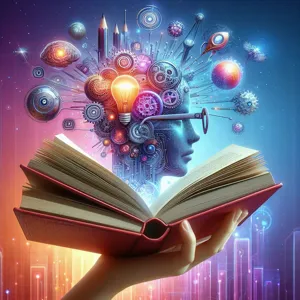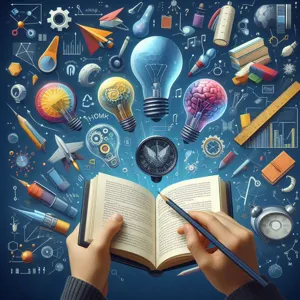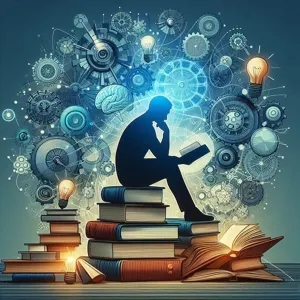Golf is more than just a sport; it’s a blend of precision, strategy, and mental fortitude that captivates players and enthusiasts alike.
Whether you’re a seasoned pro looking to refine your skills or a novice eager to understand the intricacies of the game, the right guidance can make all the difference. In the world of golf literature, there lies a treasure trove of knowledge waiting to be explored. From instructional manuals that break down swing mechanics to biographies of legendary players that inspire and motivate, these books offer invaluable insights to elevate your game. Join us as we tee off on a journey through the pages of the best golf books available, each one promising to enhance your understanding of the game and transform your approach on the course. Get ready to unlock new techniques, hone your mental game, and immerse yourself in the rich history of golf, all while enjoying a good read!
1. Introduction: The Importance of Golf Literature

Golf is more than just a game; it’s a journey of self-discovery, strategy, and mastery. For enthusiasts, whether beginners or seasoned players, literature surrounding the sport serves as an invaluable resource. Golf books not only offer insights into swing mechanics and course management but also delve into the mental aspects of the game, helping players cultivate the right mindset to tackle challenges both on and off the course.
Engaging with golf literature can illuminate the rich history of the sport, showcasing legendary players and their extraordinary journeys, while also providing practical advice from seasoned professionals. These texts can shift your perspective, fostering a deeper appreciation for the nuances of the game—from the intricate details of the perfect swing to the art of reading greens.
Moreover, a good golf book can inspire you, motivating you to push your limits and elevate your performance. As you flip through pages filled with tips, anecdotes, and strategies, you’re not just learning about golf; you’re absorbing the very essence of the sport itself. Whether you’re seeking to refine your technique or simply looking for inspiration to enhance your love for the game, golf literature is essential for every golfer eager to tee off with knowledge. In the following sections, we’ll explore some of the best golf books that promise to enrich your understanding and enjoyment of this timeless sport.
2. Classic Golf Books Every Golfer Should Read
When it comes to enhancing your golf game, few resources are as invaluable as a well-chosen book. Classic golf literature not only provides insights into the technical aspects of the game but also delves into the mental and emotional nuances that every golfer encounters on the course. These timeless works have shaped the understanding of golf, offering wisdom that transcends eras and continues to resonate with both novices and seasoned players alike.
One of the most revered books in golf history is *“The Golfing Machine” by Homer Kelley*. Published in the 1960s, this comprehensive guide presents an intricate look at the mechanics of the golf swing. Kelley breaks down the physics of swinging a club into digestible concepts, making it a must-read for anyone serious about improving their technique. With detailed illustrations and a systematic approach, this book demystifies the complexities of the swing, providing a foundation for golfers eager to refine their skills.
Another essential read is *“Golf My Way” by Jack Nicklaus*. In this autobiographical work, the legendary golfer shares his personal experiences, strategies, and philosophies that have shaped his illustrious career. Nicklaus’s insights into course management, mental toughness, and practice routines are both practical and motivational, making this book a treasure trove of knowledge for golfers at any level. His approachable writing style invites readers to embrace the game in a way that is both enjoyable and enlightening.
For those interested in the history and culture of golf, *“A Good Walk Spoiled” by John Feinstein* offers a compelling narrative that explores the professional tour through the eyes of both players and fans. Feinstein’s vivid storytelling captures the highs and lows of tournament life, providing a behind-the-scenes look at the pressures and triumphs faced by elite golfers. This book is an excellent reminder of the passion that drives the sport and the stories that make each round of golf memorable.
Lastly, no golfer’s library would be complete without *“The Elements of Scoring” by Raymond Floyd*. In this insightful guide, Floyd emphasizes the importance of short game skills and course management, offering practical tips on how to lower your scores. His experience as a professional golfer translates into straightforward advice that emphasizes smart play over sheer power, allowing golfers to approach the game more strategically.
By immersing yourself in these classic golf books, you can gain a deeper appreciation of the sport while also picking up valuable lessons that could transform your game. Whether you’re looking to improve your swing, enhance your mental game, or simply enjoy the rich narrative of golf’s history, these titles are sure to inspire and elevate your golfing experience. Tee off with knowledge, and watch your game flourish!
3. Modern Must-Reads for Aspiring Golfers

In the ever-evolving world of golf, staying updated with contemporary techniques, strategies, and insights is crucial for any aspiring golfer. Modern must-reads not only provide valuable instruction but also offer fresh perspectives on the mental and physical aspects of the game. Here are a few standout titles that have garnered attention in recent years and are sure to elevate your golfing journey.
**1. “The Short Game Bible” by Dave Pelz**
A revered figure in golf instruction, Dave Pelz brings his expertise to the short game in this comprehensive guide. Pelz delves into the nuances of chipping, pitching, and putting, emphasizing the importance of these skills in lowering your scores. With detailed illustrations and practical drills, this book is a treasure trove for golfers looking to refine their short game tactics and improve their overall performance on the course.
**2. “Golf is Not a Game of Perfect” by Dr. Bob Rotella**
Renowned sports psychologist Dr. Bob Rotella takes a deep dive into the mental side of golf in this insightful read. He emphasizes that success in golf is as much about mindset as it is about technique. Through anecdotes and guidance, Rotella teaches readers how to conquer their fears, maintain focus, and build confidence on the course. This book is a game-changer for any golfer seeking to overcome mental barriers and unleash their true potential.
**3. “The 8-Step Swing” by Jim Hardy**
Jim Hardy, a well-respected instructor in the golf community, presents an innovative approach to swinging the club. In “The 8-Step Swing,” he breaks down the complexities of the golf swing into manageable steps, making it accessible for golfers at all skill levels. Hardy’s method emphasizes the importance of understanding your unique swing mechanics and provides practical drills to enhance your technique. This book serves as an invaluable resource for those looking to develop a more consistent and effective swing.
**4. “Every Shot Must Have a Purpose” by Pia Nilsson and Lynn Marriott**
This groundbreaking book by acclaimed coaches Pia Nilsson and Lynn Marriott focuses on the importance of intentionality in every aspect of the game. They introduce the concept of mindfulness in golf, encouraging players to approach each shot with clear purpose and focus. By incorporating practical exercises and mental strategies, this book helps golfers cultivate a deeper connection with their game, leading to improved performance and enjoyment on the course.
These modern must-reads are not just instructional guides; they are sources of inspiration that can transform your approach to golf. Whether you’re navigating the intricacies of the short game, honing your mental fortitude, or perfecting your swing, these books provide the knowledge and tools necessary to elevate your game to new heights. So grab a copy, hit the greens, and watch your skills improve as you tee off with newfound knowledge!
4. Instructional Books: Techniques and Tips from the Pros
When it comes to elevating your golf game, few resources are as invaluable as instructional books authored by the sport’s top professionals. These books not only provide a wealth of knowledge but also offer insights that can transform a novice golfer into a more skilled player. Instructional books are designed to break down complex techniques into digestible tips that you can easily incorporate into your practice sessions or on the course.
One standout in this category is “The Golf Swing: The Definitive Guide to the Perfect Golf Swing” by David Leadbetter. Leadbetter, a renowned coach who has worked with multiple major champions, distills his extensive experience into practical advice that addresses everything from grip to follow-through. His step-by-step approach makes it easier for golfers of all levels to understand the mechanics of a good swing, while his illustrations clarify the nuances of body positioning and motion.
Another exceptional resource is “The Short Game Bible” by Phil Mickelson. Known for his short game prowess, Mickelson shares his secrets on chipping, pitching, and putting. With a focus on the often-overlooked aspects of golf, this book offers techniques that can make a significant difference in your score. Mickelson’s engaging writing style makes the learning experience enjoyable, while his personal anecdotes provide motivation and inspiration.
For those seeking a holistic view of the game, “Every Shot Must Have a Purpose” by Pia Nilsson and Lynn Marriott offers a unique perspective on mental and strategic approaches to golf. This book emphasizes the importance of focus and intention behind every shot, encouraging readers to develop a strong mental game that complements their physical skills. Through practical exercises and insightful strategies, the authors guide golfers to create a more purposeful approach to their play.
These instructional books serve as more than just guides; they are valuable companions on your golfing journey. By integrating the techniques and tips from these pros into your practice routine, you can refine your skills and gain the confidence needed to tackle any course. Whether you’re aiming for a lower handicap or simply want to enjoy the game more fully, these resources will be instrumental in helping you tee off with knowledge and finesse.
5. Biographies of Iconic Golfers: Learning from Legends

When it comes to improving your golf game, there’s no better source of inspiration and insight than the stories of those who have walked the fairways before you. Biographies of iconic golfers provide a fascinating glimpse into the lives, struggles, and triumphs of the legends who have shaped the sport. These narratives are not just tales of success but detailed accounts of hard work, perseverance, and the mental fortitude required to excel in golf.
Take, for instance, the life of Arnold Palmer, whose biography captures not just his remarkable achievements on the course but also his charisma and the way he connected with fans. Palmer’s story teaches us about the importance of sportsmanship and how an authentic connection to the game can elevate one’s experience. Similarly, the biography of Bobby Jones offers a deep dive into the mind of a golfer who not only revolutionized the sport with his incredible skill but also exemplified integrity and humility.
Reading about the trials and tribulations faced by these sports icons can provide valuable lessons in resilience and dedication. You’ll discover their unique approaches to practice, their mental strategies during high-pressure tournaments, and how they overcame setbacks in their careers. Ultimately, these biographies serve as a reminder that greatness in golf, as in life, is often forged through adversity and an unwavering commitment to one’s goals.
Moreover, immersing yourself in these stories allows you to glean insights that can be applied to your own game. Whether it’s learning about Ben Hogan’s intense practice routines or understanding how Tiger Woods managed to maintain focus amidst personal challenges, each biography is a treasure trove of knowledge. By embracing the lessons from these legends, you not only enrich your understanding of the game but also find inspiration to tackle your own challenges on the course. So, grab a biography of your favorite golfer and tee off with their wisdom—who knows, it might just be the boost your game needs!
6. The Psychology of Golf: Mental Strategies for Success
In the intricate dance of golf, where precision meets passion, the mind often plays a more pivotal role than the swing itself. “The Psychology of Golf: Mental Strategies for Success” delves deep into the mental game, revealing how mastering your mindset can be just as crucial as perfecting your technique. This book offers a treasure trove of insights that can transform your approach to the course and elevate your performance to new heights.
Drawing on the latest research in sports psychology, this compelling read explores the mental hurdles that golfers frequently face—nerves on the tee, maintaining focus during a round, and overcoming the frustration of a bad hole. With practical advice and proven strategies, the author guides readers through techniques such as visualization, positive self-talk, and pre-shot routines, all designed to cultivate a winning mindset.
Moreover, the book emphasizes the importance of emotional control, teaching golfers how to channel their feelings into productive energy rather than letting anxiety or frustration derail their game. With anecdotes from professional players who have successfully navigated the psychological challenges of the sport, readers will find relatable stories that inspire confidence and determination.
Whether you’re a weekend warrior or a seasoned player, “The Psychology of Golf” is an essential companion on your journey to improvement. By integrating these mental strategies into your practice and play, you can not only sharpen your skills but also enhance your enjoyment of the game. After all, golf is as much about the mind as it is about the mechanics, and this book equips you with the tools to excel on both fronts. Tee off with knowledge and watch your game transform!
7. Historical Perspectives: Golf’s Evolution Through Literature

Golf is more than just a game; it’s a rich tapestry woven with history, tradition, and cultural significance. Delving into the historical perspectives of golf through literature offers a unique opportunity to understand how the sport has evolved over the centuries. From its humble beginnings in 15th century Scotland to the sprawling, high-tech courses of today, the journey of golf is both fascinating and enlightening.
Books like “A History of Golf” by the renowned golf historian, Charles Price, provide a comprehensive look at the milestones that have shaped the sport. Price meticulously chronicles everything from the early origins of golf, where players used wooden sticks to hit stones across uneven terrain, to the establishment of iconic courses and the emergence of professional tournaments. His vivid storytelling brings to life the personalities and events that have defined the game, making it clear that golf is as much about its players and their stories as it is about the sport itself.
Another must-read is “The Greatest Game Ever Played” by Mark Frost, which recounts the legendary 1913 U.S. Open where amateur Francis Ouimet triumphed over established professionals. This gripping narrative not only highlights a pivotal moment in golf history but also serves as an inspiration for aspiring golfers, showcasing the passion and determination that can lead to greatness.
By immersing yourself in these historical accounts, you’ll gain insights into the evolution of equipment, playing styles, and the cultural shifts that have influenced golf’s popularity. Understanding the roots of the game can enhance your appreciation for its complexities and strategies, allowing you to approach your own game with a richer perspective. Whether you’re a seasoned golfer or a newcomer to the fairway, exploring golf’s literary history can provide valuable lessons that transcend the course and resonate throughout your life. So grab a book, settle into your favorite reading nook, and tee off on a literary journey that will elevate both your knowledge and your game.
8. Course Management and Strategy: Books for Better Decision-Making
When it comes to golf, mastering the technical skills of your swing or perfecting your putting technique is only part of the equation. The true art of the game lies in course management and strategic decision-making. The right choices on the course can significantly impact your score and overall performance, and that’s where insightful books can serve as invaluable resources.
Books focused on course management and strategy delve into the mental aspects of the game, teaching players to navigate the course with purpose and finesse. Titles like “Every Shot Counts” by Mark Broadie introduce golfers to the revolutionary concept of strokes gained analysis, helping players understand how every shot contributes to their overall performance. This book encourages readers to evaluate risk versus reward, empowering them to make informed decisions based on empirical data.
Another great read is “The Golfing Machine” by Homer Kelley, which offers a deep dive into the mechanics of the game but also emphasizes the importance of strategic play. With its detailed diagrams and analytical approach, this book helps golfers understand how to approach different course situations effectively, ensuring they can adapt their strategies to various challenges they encounter.
Additionally, “Fearless Golf” by Dr. Gio Valiante explores the psychology behind decision-making on the course, providing mental strategies to overcome anxiety and enhance focus. This book emphasizes the importance of a strong mindset, encouraging players to trust their instincts and make confident choices, regardless of the pressure of the moment.
By investing time in these books, golfers can cultivate a deeper understanding of course management, allowing them to approach each round with a strategic mindset. With the right strategies in your toolkit, you’ll not only improve your decision-making but also elevate your overall game, leading to more consistent and rewarding performances on the course. So grab a book, absorb the wisdom within its pages, and watch as your golf game transforms!
9. The Science of Golf: Understanding the Mechanics of the Game
When it comes to mastering the art of golf, understanding the underlying mechanics is just as crucial as your swing technique or putting strategy. “The Science of Golf” delves into the fascinating world of physics, biomechanics, and psychology that shape every aspect of the game. This book is a treasure trove of insights, breaking down complex concepts into easily digestible information that can be applied on the course.
From the moment the club strikes the ball to the intricate physics of flight dynamics, this book offers a comprehensive look at how various forces interact to influence your shots. You’ll learn about the importance of angle, speed, and spin, and how each element contributes to the trajectory and distance of your golf ball. The book also emphasizes the role of body mechanics, explaining how posture, grip, and swing path can dramatically affect your performance.
But it doesn’t stop there. “The Science of Golf” also explores the mental side of the game, discussing how focus, visualization, and emotional control can enhance your performance under pressure. With practical exercises and drills, it invites readers to engage with the material and apply newfound knowledge directly to their game.
Whether you’re a budding amateur looking to refine your skills or a seasoned player eager to elevate your understanding, this book is an essential addition to your golf library. By bridging the gap between theory and practice, “The Science of Golf” will not only enhance your game but may also transform how you approach each round, making you a more strategic and informed player on the green.
10. Fictional Works that Capture the Spirit of Golf
While instructional guides and technique manuals are invaluable for honing your skills on the course, there’s something uniquely invigorating about immersing yourself in fictional works that encapsulate the spirit of golf. These stories weave together the thrill of the game with rich narratives and memorable characters, offering readers not just entertainment, but also a deeper appreciation for the ethos of the sport.
One standout title in this genre is *The Legend of Bagger Vance* by Steven Pressfield. This novel tells the story of a troubled golfer, Rannulph Junuh, who seeks redemption on the links with the help of a mysterious caddy named Bagger Vance. The narrative dives deep into the philosophical elements of golf, exploring themes of self-discovery, resilience, and the pursuit of excellence, all set against the backdrop of a stunningly depicted golf landscape.
Another must-read is *Golf in the Kingdom* by Michael Murphy, which blends the mystical with the practical, as it follows the journey of a young golfer who encounters a wise old guru on a Scottish golf course. This book takes readers on a spiritual journey that combines the game of golf with life’s larger questions, highlighting how the sport reflects the complexities of existence itself.
For those who enjoy humor, *The Greatest Game Ever Played* by Mark Frost is a delightful recounting of the 1913 U.S. Open, where an amateur, Francis Ouimet, shocked the world by defeating the reigning champions. This tale of underdog triumph is both entertaining and inspirational, filled with whimsical anecdotes that celebrate the human spirit and the joys of competition.
These fictional works not only serve as enjoyable reads but also deepen one’s understanding of the game, portraying golf as more than just a sport—it’s a metaphor for life, full of challenges, triumphs, and, most importantly, the camaraderie and passion that connect us all as golfers. So, if you’re looking to elevate your game and your perspective, dive into these stories that capture the very essence of golf. You’ll be inspired to swing your clubs with renewed vigor and appreciation.
11. Golf Travel Literature: Exploring Iconic Courses Worldwide
Golf travel literature offers a unique perspective that goes beyond the mechanics of the game, inviting readers to embark on a journey through some of the most iconic courses around the globe. These books not only highlight the breathtaking landscapes and rich histories of notable golf destinations but also weave personal anecdotes that resonate with the soul of the sport.
Imagine flipping through the pages of a beautifully illustrated tome that transports you to the rolling greens of St. Andrews, where the whispers of golf’s origins can almost be heard in the gentle rustle of the wind. Or picture yourself navigating the sun-soaked fairways of Pebble Beach, with its stunning coastal views that provide a picturesque backdrop for every swing. Each course detailed in these volumes comes alive through vivid descriptions and engaging narratives, encouraging readers to dream about their next golf getaway.
In addition to the allure of the courses themselves, golf travel literature often delves into the cultural significance of the game in various regions. It uncovers the traditions, local legends, and unforgettable experiences that define the golfing landscape, whether it’s the camaraderie found in a quaint clubhouse in Scotland or the vibrant atmosphere of a championship event in the United States.
By exploring these literary works, golfers not only gain insight into the best places to play but also develop an appreciation for the sport’s global impact. From the thrill of discovering hidden gems off the beaten path to the challenge of tackling world-renowned layouts, these books serve as a source of inspiration and knowledge that can elevate both your game and your travel aspirations. So grab a book, plan your next golfing adventure, and let the stories inspire you to tee off on courses that are as rich in history as they are in challenge.
12. Recommendations for Beginners: Where to Start
Embarking on your golfing journey can be both exciting and daunting, especially when faced with the multitude of resources available. To simplify the process and set you on the right path, we’ve curated a selection of essential reads that cater specifically to beginners. These books not only demystify the fundamentals of the game but also inspire a deeper appreciation for golf’s rich history and nuances.
**”The Little Red Book of Golf Wisdom” by Harvey Penick** stands out as a must-read for novices. This concise volume is packed with practical advice and timeless wisdom that transcends the game’s technical aspects. Penick’s simple yet profound insights will resonate with you as you navigate the early days of your golfing experience.
For a more hands-on approach, **”Golf Is Not a Game of Perfect” by Dr. Bob Rotella** delves into the mental side of the sport. Rotella, a renowned sports psychologist, emphasizes the importance of a strong mental game, offering strategies to build confidence and focus. This book serves as a vital reminder that success in golf often begins between the ears.
To understand the basics of swing mechanics, **”Simple Golf: The Complete Guide to Golfing Fundamentals” by Thomas Golf** provides a straightforward breakdown of grip, stance, and swing techniques. With clear illustrations and detailed explanations, this guide will help you form a solid foundation from which to build your skills.
Lastly, **”Golf for Dummies” by Gary McCord** is an excellent resource that covers everything from the rules of the game to etiquette on the course. This comprehensive guide breaks down complex concepts into digestible chunks, making it an ideal starting point for anyone new to golf.
These recommended readings are more than just books; they are your mentors in print, guiding you through the intricacies of golf while instilling a sense of confidence and enthusiasm in your game. As you delve into these pages, you’ll not only learn the mechanics and strategies of golf but also cultivate a lifelong passion for this timeless sport. So grab your clubs, hit the greens, and let these literary companions elevate your golfing journey!
13. How to Create a Personal Golf Library
Building a personal golf library is not just about amassing a collection of books; it’s about curating a resource that inspires, educates, and elevates your game, both on and off the course. Start by identifying the areas of golf you are most passionate about—whether it’s the intricacies of the swing, the mental side of the game, or historical accounts of the sport’s legends. This focus will guide your selections and create a tailored collection that resonates with you.
Consider visiting your local bookstore or library, as well as online retailers, to explore a wide array of golf literature. Look for classic titles that have stood the test of time, such as “The Golfing Machine” by Homer Kelley, which delves deep into the mechanics of the golf swing, or “A Good Walk Spoiled” by John Feinstein, a captivating narrative about professional golf life. Additionally, contemporary works, like “The Inner Game of Golf” by W. Timothy Gallwey, provide invaluable insights into the psychological aspects of the game.
Don’t forget to include instructional manuals that cater to your skill level, from beginner to advanced techniques. Biographies of famous golfers can also offer inspiration and motivation, allowing you to learn from the experiences of those who have walked the fairways before you.
Once you’ve gathered your books, create a dedicated space in your home where you can store and display them. A well-organized bookshelf not only makes it easier to find the material you need but also serves as a visual reminder of your commitment to improvement. Consider adding personal touches, such as framed photographs from your best rounds or memorabilia from tournaments you’ve attended, to make your library feel uniquely yours.
Lastly, don’t just collect these books—engage with them. Take notes, highlight passages, and apply the lessons you learn on the course. By actively interacting with your golf library, you’ll not only enhance your knowledge but also cultivate a deeper love for the game. As you tee off with newfound wisdom, you’ll find that the journey of improvement is as rewarding as the game itself.
14. Utilizing Golf Books for Continuous Improvement
In the ever-evolving world of golf, the quest for improvement is a continuous journey that can be significantly enhanced through the pages of a good book. Utilizing golf books for continuous improvement is more than just a supplementary tool; it’s an essential component of any golfer’s toolkit. These written resources offer a wealth of knowledge, from fundamental swing mechanics to advanced course management strategies, ensuring that players of all levels can find valuable insights.
Imagine curling up on your couch with a classic like Ben Hogan’s “Five Lessons: The Modern Fundamentals of Golf,” where you can absorb timeless techniques straight from one of the game’s legends. The meticulous breakdown of grip, stance, and swing mechanics can provide a solid foundation for beginners while offering seasoned players a chance to refine their skills. Alternatively, for those looking to elevate their mental game, books like “Golf is Not a Game of Perfect” by Dr. Bob Rotella delve into the psychological aspects of the sport, teaching players how to harness their mental resilience and approach each shot with confidence.
Moreover, golf literature is not just limited to instructional guides; it encompasses biographies, historical accounts, and stories that inspire and motivate. Reading about the trials and triumphs of legendary golfers can ignite a passion for the game and offer fresh perspectives on overcoming challenges on the course. By integrating insights from golf books into your practice routine and strategy, you can foster a mindset of continuous improvement—an approach that not only sharpens your skills but also deepens your love for the game.
As you explore the vast array of golf literature available, consider setting aside dedicated time each week to read and reflect on what you’ve learned. Whether you take notes on key takeaways or apply new techniques on the driving range, utilizing golf books as a resource for continuous improvement can transform your game and keep you engaged in your development as a golfer. Embrace the wisdom found within these pages, and watch as your skills and knowledge flourish on the course.
15. Conclusion: The Lasting Impact of Golf Literature on Your Game
In conclusion, the world of golf literature offers a treasure trove of insights, strategies, and inspiration that can profoundly impact your game. Whether you are a seasoned player looking to refine your skills or a novice just starting your journey on the fairways, the right golf book can serve as your personal mentor. From classic instructional texts that break down the fundamentals of swing mechanics to motivational tales of legendary golfers overcoming adversity, each page has the potential to transform your understanding and approach to the sport.
As you explore the titles we’ve highlighted, remember that the lessons learned extend beyond the course. Golf is as much a mental game as it is a physical one, and the wisdom shared by authors can help you cultivate a mindset of resilience, focus, and strategic thinking. By integrating these lessons into your practice and play, you not only enhance your skills but also deepen your appreciation for the game.
So, as you tee off into your next round, carry the knowledge you’ve gained from these books with you. Reflect on the strategies, absorb the philosophies, and embrace the stories of those who have walked the same paths before you. Golf is a journey that continually evolves, and with the guidance of literature, you can elevate your game to new heights, ensuring that every swing is informed by the wisdom of those who came before you. Happy reading and even happier golfing!
In conclusion, immersing yourself in the world of golf literature is an excellent way to enhance your skills, deepen your understanding of the game, and ignite your passion for the sport. The books we’ve explored in this post offer valuable insights from seasoned professionals, time-tested strategies, and inspiring stories that can elevate your game to new heights. Whether you’re a beginner looking to grasp the fundamentals or a seasoned player aiming to refine your technique, these reads are sure to provide the knowledge and motivation you need. So, grab a book, hit the driving range, and watch as your confidence and performance on the course soar. Remember, every great golfer started with a single swing – and a little bit of knowledge can go a long way. Happy reading and play well!

